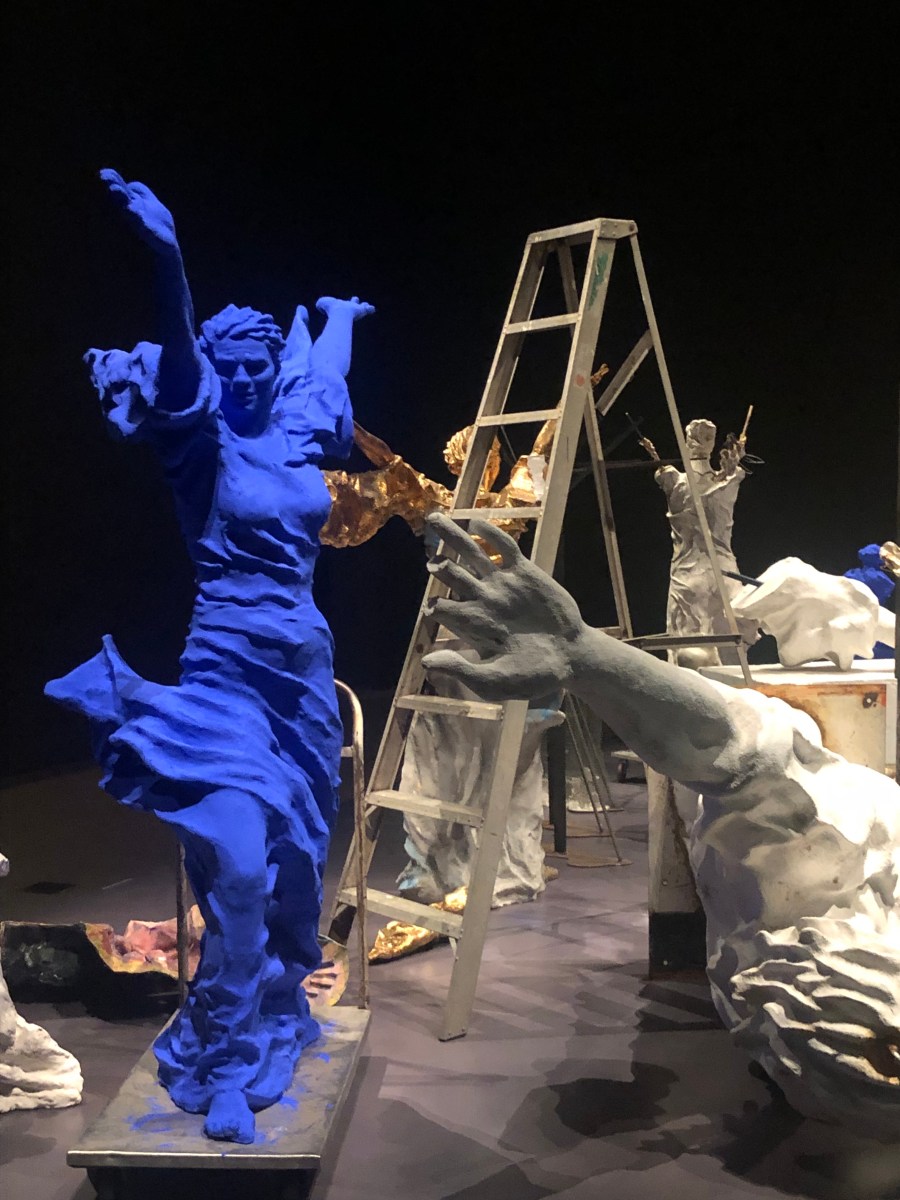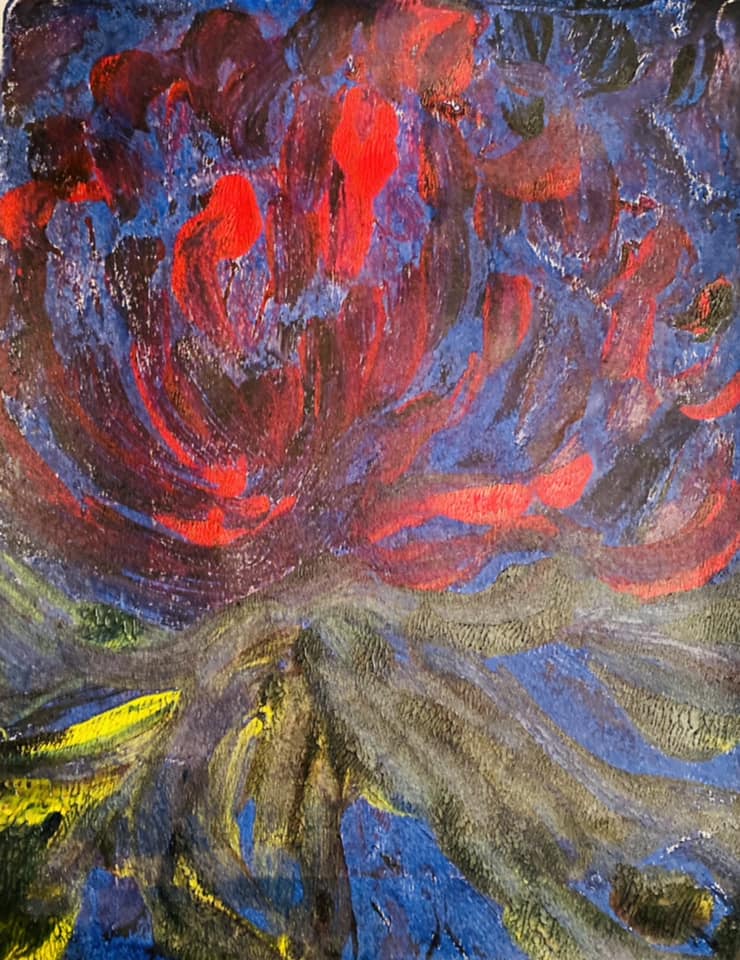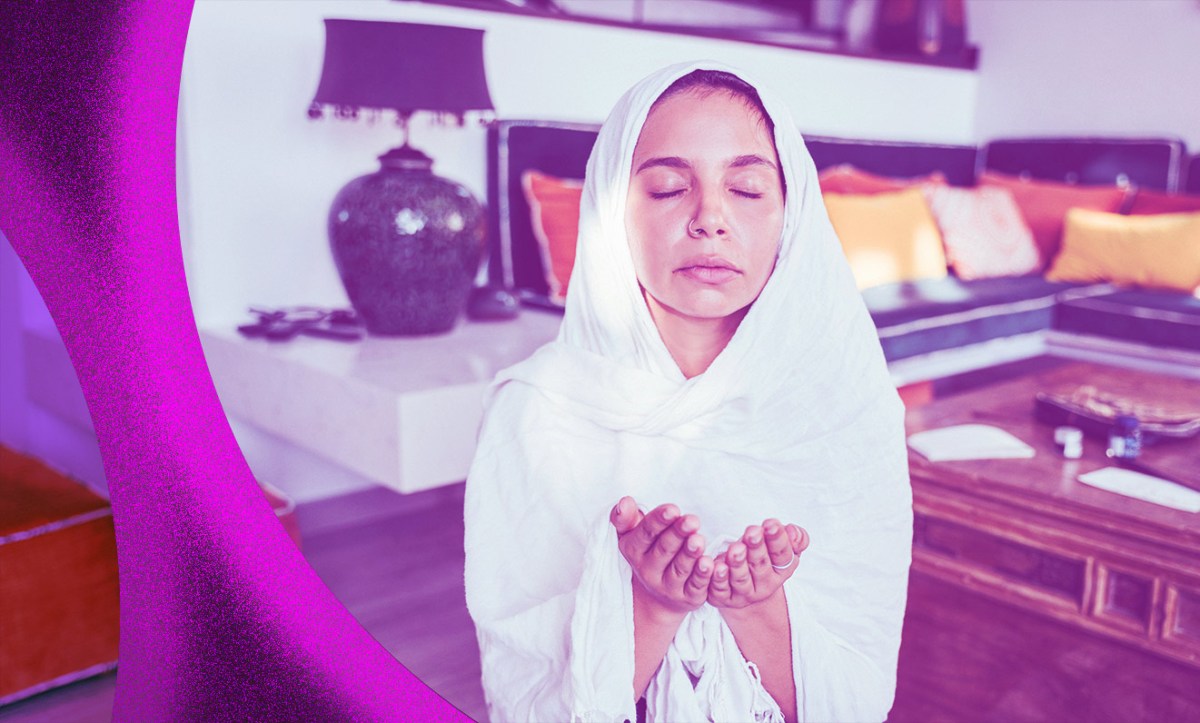In this FREE journey to creative recovery, we’re following Julia Cameron’s bestselling creativity self-help manual, The Artist’s Way, tracing the book’s 12-week program with a series of inspiring ArtsHub articles, resources and ideas for artist-date activities. There’s also a Facebook community group you can join for discussion and support.
To recap, the idea with The Artist’s Way is to commit yourself to a structured creative recovery that will spark joy, remove blocks and build the confidence to play and take risks – whether you’re a professional artist or not. The main tools of the course are Morning Pages and Artist Dates. You can read previous articles here:
- Introduction: an invitation to change your life
- Week 1: Recovering a sense of safety
- Week 2: Recovering a sense of identity
- Week 3: Recovering a sense of power
- Week 4: Recovering a sense of integrity
- Week 5: Recovering a sense of possibility
- Week 6: Recovering a sense of abundance
- Week 7: Recovering a sense of connection
- Week 8: Recovering a sense of strength
- Week 9: Recovering a sense of compassion
- Week 10: Recovering a sense of self-protection
- Week 11: Recovering a sense of autonomy
Or you can jump right in and follow along, wherever you are in the process. Grab a copy of the book, start reading and look out for ArtsHub’s weekly articles, published each Monday.
Keep up to date with The Artist’s Way series here
Week 12: Faith, trust and commitment to growth
I’ve been looking forward to this week so much because it signals the top of the mountain, the pinnacle of the program. But of course there is no real end, just a completion of one cycle and the start of a new one. That’s exciting, but it’s good to rest and integrate what we’ve discovered.
It’s amazing to look back on these last three months and see how far we’ve come, but also how far there still is to go – an unfolding process, like life itself, shrinking and expanding. We are becoming something new while also repeating the same old patterns with endless variations.
In this week’s chapter, Julia Cameron reminds us that, above all, creativity requires faith. This means relinquishing control – or the illusion of control – which most of us hate to give up. She suggests using some clearing affirmations: ‘I know the things I know’ and ‘I trust my own inner guide’ – either of which ‘will eventually yield us a sense of our own direction – which we will often promptly resist!’
Oh the resistance! We know it well. So much of The Artist’s Way is about meeting this resistance and learning how to trust in the mystery of creation.
Mystery and learning to feel safe in the dark
We like to think of creativity and art in terms of light. The metaphors are telling. Lightbulb moments, flashes of inspiration. Lightning! But Cameron reminds us that most new things, like daffodil bulbs and human babies, gestate over months in the murky darkness. It’s dangerous to pull them out of the soil or the womb before they’re ready to be looked at and judged. Don’t poke the rising loaf of bread or open the oven on the cake too soon.
‘Ideas, like stalactites and stalagmites, form in the dark inner cave of consciousness,’ she says. ‘They form in drips and drops, not by squared-off building blocks. We must learn to wait for an idea to hatch. Or, to use a gardening image, we must learn to not pull our ideas up by the roots to see if they are growing.’
The work we must do as recovering artists involves living with the not-knowing of the mystery – trusting that if we keep providing the right conditions for growth, it will definitely happen, often in unforeseen ways. Morning Pages and Artist Dates help us develop this doodling faith in the process. We keep showing up faithfully, without needing immediate results.
The imagination at play
Do you use a capital A for “Art” and “Artist”? Cameron wants us to stop doing this, to remove that sense of reverence, seriousness and ambition from our creativity. She wants us to rediscover humour, lightness and playfulness, and to this end, she advises hobbies, crafts and mundane mending or gardening as tonics for when we’re stuck. Darn a sock, or repot a plant, she says.
‘When someone is panicked halfway across the bridge into a new life, repotting plants into larger and better containers quite literally grounds that person and gives him or her a sense of expansion.’
I read this and think of all my own strangled, half-dead plants. They are poorly drained and crying out for bigger pots; I need to listen and give them the kindness of space to grow.
Hobbies and crafts remove the heaviness of expectation. They allow the generative mulling and experimentation that feeds new ideas. One thing leads to another quite organically, and before we know it, repotting that plant has led to cleaning out that cupboard of too-small clothes, and finding some coloured pencils or chalks that need to be tried out.
I’ve noticed this myself as part of my creative recovery. Changing one small part of my routine feeds into multiple other changes and awakens a sense of possibility.
Escape velocity – and the tests that will arise to stall it
As we gain momentum in creative recovery, we get nearer to blasting off, like a NASA space launch, says Cameron, who uses the term “Escape Velocity”. She warns that, as we near this, we will have to pass the final tests to our resolve and commitment.
It’s almost spooky how these traps arise, and I recognise these examples from my own life:
- You’re about to make a breakthrough or reach a milestone and your partner or best friend calls with an urgent need to chat.
- You’re all set to leave a bad job when the boss offers you a small pay rise or promotion.
- You’re feeling confident and strong, when a dear relative voices doubts about your choices, “for your own good” of course.
Don’t be fooled or seduced away from your mission by flattery or a little cash, says Cameron. Stay the path because these are the tests we need to pass in order to take off.
‘In order to achieve escape velocity, we must learn to keep our own counsel, to move silently among doubters, to voice our plans only among our allies, and to name our allies accurately… Escape velocity requires the sword of steely intention and the shield of self-determination.’
My journey with The Artist’s Way this week
This week I managed another proper Artist Date. In just one hour, I travelled through a portal. I wandered into the Ian Potter Centre: NGV Australia at Federation Square, with no intention except to follow my nose. This led me to the third floor exhibition of sculpture installations by Melbourne contemporary artist Nina Sanadze (on show and free until 4 August).
Read: Exhibition review: Nina Sanadze, Ian Potter Centre: NGV Australia
Born in the Soviet Union in the late stages of communism, Sanadze’s work explores monuments, remnants and the end of eras, beliefs and systems. I spent the most time with the installation Call to peace, anatomy of the dream, a collection of casts of female figures, the central one inspired by the iconic Nike of Samothrace sculpture, with her forward stance and wings raised, interpreted here in blue and gold and unfired clay. Surrounding her are are smashed remnants, unused armatures and a ladder, suggesting the work is in progress and unfinished.

I loved what Sanadze writes in the accompanying artist notes about this piece – words that resonate with our Artist’s Way journey:
‘The installation delineates the journey of creation, contemplation and daring to dream on a grand scale, all while facing the insurmountable barrier of realising the dream exactly as envisioned. Coming to terms with my limitations in making the original dream happen, as well as gratefully acknowledging and recognising the beauty of unplanned discoveries, surprises and lessons that the creative studio process produced, I gathered every part of this making and failing journey as an “anatomy of the dream”.’
Reading this, I think about the sadness of a completed work that so rarely matches our highest dreams for it. My novel that will be published later this year, will never be quite as radiant as the imagined version, the bright and shining seed that started it all. This imperfection that must be accepted, embraced and released. It’s an act of humility to call something finished and send it out into the world to be enjoyed or neglected.
I Instagrammed my artist date with Nina Sanadze, and she responded with gratitude on her own account. A connection was made, though we may never meet, and I remembered how wonderful it is as an artist to know that your work has met a receptive soul.
The grand web of connection
These last three months have been intense and high-pressured. Time and time again, I’ve come up against my own internal limitations and self-sabotage. But I’ve also grown in leaps and spurts, realising how much can be actually accomplished if we just let go of the idea of perfection and show up on the page.
So often we defer creative pursuits – and happiness itself – until the timing is perfect. We tell ourselves we’ll start when the conditions are right, when inspiration strikes like lightning. Is it any wonder we get stuck in the waiting? The exactly right day never comes, but the “good enough” day, the one where we make one small change or tiny step, is every day and today.
Last night, as part of my own process, I took a little trip, with mushrooms. Julia Cameron, in full sobriety, would not approve, and I’m certainly not advocating this as a necessary or advisable path for others to take. But personally, every so often, I make an intentional, safely-sourced visit to altered consciousness. It’s not about partying or having fun – though it can be that, and often is quite joyful. It’s more about taking time to explore and integrate what’s been happening in my psyche. To get outside routine and open up to new imagery.
This time, I took more than usual. I was longing to experience a sense of freedom and disembodiment, a full release from all the anxiety and self-consciousness, the way I’d heard others talk about their Psilocybin-induced ego-death.
But in the peak moment of my trip, what I felt instead was a grand web of connection and containment where I was caught and held in the networked roots of an ancient forest. I would not fly that day, but must stay, despite my wishes to float up into the sky and be free.
The message I got from the mushrooms (it’s all a metaphor, of course) was that my small part in the grand scheme of things was not to escape or retreat to a mystic’s cave, but to stay pulsing and beating at the heart of things. I cried, wept actually, and felt the huge sadness of this limation, but also the peace of accepting that I’m exactly where I need to be, for now. My role in the network is to share and participate not to run and hide.
So here I am.
Summing up
This is the third time I’ve done The Artist’s Way program, and despite a temptation to tie things up in a in a pretty bow, there’s no neat summary to give. Nevertheless, here are some things I take away from this incarnation.
10 things I’ve learned
- I’m a child inside when it comes to my creativity, and that’s normal.
- Words of affirmation and encouragement feel silly, but they work like magic.
- Belief in some kind of higher power is essential to getting over my anxiety and neuroticism.
- I need to ask for help directly, more often.
- I give away my power and my free time too easily.
- My creativity doesn’t respond to military discipline, though deadlines and goals can be supportive and enabling when combined with unstructured play and free time.
- Starting is the hardest. Finishing is hard too. Extra support and encouraging rituals help.
- Artist dates are inspiring and fun. I need more of them.
- Being an artist can be an act of service, a force for good in the world, so I can stop feeling guilty and selfish about it.
- My inner critic is a clever bully. She needs to be regularly tamed.
On the chalkboard on my toilet wall, I’ve written the following reminder to myself and whoever else happens to visit:
‘Don’t forget how far you’ve come.’
In Julia Cameron’s final words, ‘Good luck and God bless you!’
What’s next?
This won’t be the end of ArtsHub‘s Artist’s Way journey. It’s time for a pause to let readers catch up with the articles. But we will be checking in again in a while with a follow-up piece and more invitations to connect and participate. In the meantime, our Facebook group is live and active. Do join us there if you feel inclined.
Sharing from the group
This week’s featured work is by Cheryle Yin Lo from Creative Traveller who posted this photo with the accompanying note that she was ‘having a fun play with the geli plate in printmaking based on the waratah’.
‘It’s about being more playful, experimental letting go, enjoying the process and not be[ing] worried about outcome in expressing yourself through colour and energetic play. Seeking unknown outcomes and effects in each layer of colour with curiosity!’

Some Artist Date ideas
- Go to an art shop and buy yourself some colours to play with – oil or watercolour paints and pencils. Let yourself play like a kid in a candy store, according to your budget.
- Visit an art gallery like I did, and don’t try to see everything, just pick one room and revel in it.
- Go and see some student art, like the Top Arts exhibition at the Ian Potter Centre, featuring VCE student works. Be inspired by the courage and creativity of very young artists.
- Sew. Get a needle and thread and mend something. Put on good music and let yourself mull things over while you fix up a piece of clothing that needs it.
- Repot some plants.
- Set yourself a small goal to share a photo or piece of writing on social media every day for a week. It’s amazing how such little projects can build confidence and connection.
Other resources
- Check out ArtsHub Events listings with options in all states – activities including art exhibitions, theatre, dance, writing festivals.
- Visit ArtsHub‘s The Artist’s Way Community Facebook group to share your journey, connect with others and ask questions. We’d love to hear from you.






